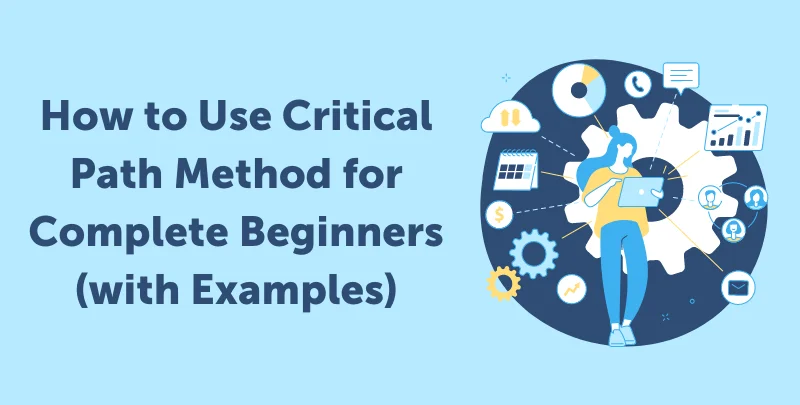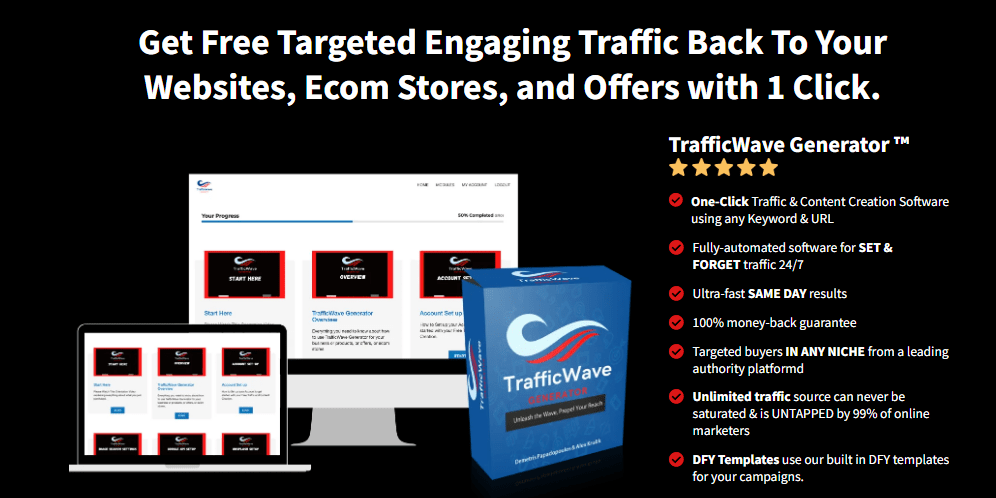Building a Fortune Online
If you’ve always dreamed of Building a Fortune Online, but have no clue where to start, look no further. The “Building a Fortune Online: The Path for Complete Beginners” article is here to provide you with the guidance and knowledge you need to kickstart your online money-making journey. Discover the secret behind the “OLSP” complete system, designed to teach even the most inexperienced individuals how to earn money online and generate automatic commissions. Whether you’re a complete beginner or an expert looking to dive into the world of making money online in 2024, this article is your ultimate resource.

Choosing the Right Online Business Model
The Importance of Choosing the Right Online Business Model
When it comes to starting an online business, choosing the right business model is crucial to your success. The online business model you choose will determine how you generate revenue, interact with customers, and scale your business. It’s important to carefully consider your options and select a business model that aligns with your goals, interests, and capabilities.
Different Types of Online Business Models
There are several different online business models to choose from, each with its own unique advantages and considerations. Some of the most common online business models include:
- E-commerce: This model involves selling physical products online through your own website or platforms like Amazon or eBay.
- Dropshipping: With dropshipping, you don’t need to hold inventory. Instead, you fulfill orders by purchasing products from a third-party supplier who then ships them directly to the customer.
- affiliate marketing: This model involves promoting other people’s products or services and earning a commission for every sale or lead generated through your referral.
- Membership sites: With a membership site, you offer exclusive content, resources, or services to members who pay a recurring fee.
- Online courses: If you have expertise in a particular field, you can create and sell online courses to teach others valuable skills or knowledge.
- SaaS (Software as a Service): This model involves creating and offering subscription-based software or web applications to customers.
Considerations for Beginners in Choosing an Online Business Model
As a beginner in the online business world, it’s important to take certain factors into consideration when choosing a business model:
- Skills and Interests: Consider your skills, interests, and expertise. Choose a business model that aligns with your strengths and passions to maximize your chances of success.
- Market Demand: Research the market demand for your chosen business model. Is there a viable audience and demand for the products or services you plan to offer?
- Start-up Costs and Resources: Consider the start-up costs and resources required for each business model. Determine whether you have the financial means and resources to get started.
- Time Commitment: Evaluate the time commitment required for each business model. Some models may require more hands-on time and effort, while others may allow for more passive income streams.
- Scalability: Consider the scalability of the business model. Will it allow you to grow and expand your business in the long term?
By carefully considering these factors and understanding the different online business models available, you can make an informed decision that suits your individual circumstances and goals. Remember, there is no “one-size-fits-all” approach, so take the time to find the model that is right for you.
Setting Up Your Online Presence
Choosing a Domain Name
One of the first steps in setting up your online presence is choosing a domain name. Your domain name is your unique web address that users will use to access your website. It’s important to select a domain name that is relevant to your business and easy to remember.
When choosing a domain name, consider the following tips:
- Keep it short and simple: A shorter domain name is easier to remember and type.
- Make it brandable: Choose a name that reflects your brand identity and is unique to your business.
- Use keywords: Incorporate relevant keywords that describe your products or services to improve search engine optimization.
- Avoid hyphens and numbers: These can make a domain name harder to remember and type correctly.
- Check for availability: Before settling on a domain name, make sure it’s available and not already registered by someone else.
Selecting a Web Hosting Provider
Once you have chosen a domain name, the next step is selecting a web hosting provider. A web hosting provider is a service that stores your website files and makes them accessible to users online.
Consider the following factors when selecting a web hosting provider:
- Reliability and uptime: Choose a provider with a strong track record of reliability and minimal downtime. This ensures that your website stays online and accessible to users.
- Bandwidth and storage: Consider the bandwidth and storage options offered by the provider to ensure they meet the needs of your website.
- Customer support: Look for a provider that offers reliable customer support in case any issues or questions arise.
- Security features: Ensure that the provider offers robust security measures to protect your website and customer data.
- Pricing: Compare the pricing plans of different providers to find one that aligns with your budget.
Designing Your Website
Once you have a domain name and web hosting provider, it’s time to design your website. Your website is the online storefront for your business and plays a critical role in attracting and engaging customers.
Consider the following tips when designing your website:
- Use a responsive design: Make sure your website is optimized for mobile devices, as an increasing number of users access the internet through their smartphones or tablets.
- Keep it visually appealing: Use high-quality images and visually appealing layouts to engage visitors.
- Maintain a user-friendly navigation: Make it easy for visitors to find the information they need and navigate through your website.
- Incorporate a clear call-to-action: Include a clear call-to-action on each page to guide visitors towards your desired conversion goals.
- Optimize for speed: Ensure that your website loads quickly to prevent visitors from leaving due to slow loading times.
Optimizing Your Website for Search Engines
Search engine optimization (SEO) is essential for driving organic traffic to your website. By optimizing your website for search engines, you can improve your website’s visibility and rankings in search engine results pages.
Consider the following SEO strategies:
- Keyword research: Identify relevant keywords that your target audience is likely to search for and incorporate them naturally throughout your website content.
- Meta tags and descriptions: Write compelling meta tags and meta descriptions that accurately describe the content on each page.
- High-quality content: Create informative, valuable, and engaging content that attracts and retains visitors.
- Backlinking: Develop a strategy to acquire high-quality backlinks from reputable websites, as they can boost your website’s authority and rankings.
- Mobile optimization: Ensure that your website is mobile-friendly to cater to the growing number of mobile users.
By implementing these SEO strategies, you can enhance your website’s visibility in search engine results and drive targeted traffic to your online business.

Effective Online Marketing Strategies
Understanding the Importance of Online Marketing
Effective online marketing is crucial for promoting your online business and reaching your target audience. Online marketing allows you to connect with potential customers, increase brand awareness, and drive traffic to your website.
Consider the following reasons why online marketing is essential:
- Global reach: Online marketing allows you to reach a global audience, breaking down geographical barriers and expanding your customer base.
- Precise targeting: With online marketing, you can target specific demographics, interests, and behaviors to reach your ideal customers.
- Cost-effective: Compared to traditional marketing methods, online marketing is often more cost-effective, making it accessible to businesses of all sizes.
- Measurable results: Online marketing provides valuable data and insights into your marketing efforts, allowing you to measure and analyze the success of your campaigns.
- Increased visibility: By implementing effective online marketing strategies, you can increase your visibility in search engine results and on social media platforms.
Search Engine Optimization (SEO)
As mentioned earlier, SEO plays a crucial role in driving organic traffic to your website. By optimizing your website for search engines, you can increase your visibility and rankings in search engine results.
Consider the following SEO techniques:
- Keyword optimization: Conduct keyword research and incorporate relevant keywords into your website content, meta tags, and headings.
- On-page optimization: Optimize your website’s structure, URLs, and headings to make it easier for search engines to crawl and index your website.
- Off-page optimization: Develop a backlinking strategy to acquire high-quality backlinks from authoritative websites.
- Content creation: Create high-quality, informative, and engaging content that incorporates relevant keywords.
- Website speed: Optimize your website’s loading speed to improve user experience and search engine rankings.
By implementing these SEO techniques, you can increase your website’s organic visibility and attract targeted traffic.
Pay-per-Click (PPC) Advertising
Pay-per-click (PPC) advertising is a popular form of online advertising where advertisers pay a fee each time their ad is clicked. PPC campaigns can be highly effective in driving targeted traffic to your website and generating leads or sales.
Consider the following steps to set up a successful PPC campaign:
- Keyword research: Identify relevant keywords that your target audience is likely to search for.
- Ad creation: Create compelling ads that accurately represent your products or services and include a clear call-to-action.
- Landing page optimization: Design and optimize landing pages that align with your ads and provide a seamless user experience.
- Budget management: Set a budget and monitor your campaign’s performance to ensure your ads are delivering a strong return on investment.
- A/B testing: Test different ad variations, headlines, and call-to-actions to optimize your campaign’s performance.
PPC advertising can be a powerful tool for driving immediate, targeted traffic to your website and increasing conversions.
Social Media Marketing
Social media marketing involves leveraging social media platforms to build brand awareness, engage with your target audience, and drive traffic to your website. With billions of active users on social media platforms, it’s an effective way to reach and connect with potential customers.
Consider the following tips for successful social media marketing:
- Identify the right platforms: Determine which social media platforms your target audience is most active on and focus your efforts there.
- Consistent branding: Maintain consistent branding across all social media profiles to build brand recognition and trust.
- Engaging content: Create and share content that is valuable, informative, entertaining, and relevant to your audience.
- Community management: Engage with your followers, respond to comments and messages, and foster a sense of community.
- Influencer partnerships: Collaborate with influencers in your niche to expand your reach and tap into their engaged audience.
Email Marketing
Email marketing is a highly effective way to nurture relationships with your audience, drive repeat business, and generate leads. Building an email list allows you to communicate directly with your audience and deliver targeted messages and offers.
Consider the following strategies for effective email marketing:
- Opt-in incentives: Offer valuable incentives, such as exclusive content or discounts, to encourage visitors to subscribe to your email list.
- Segmentation: Segment your email list based on demographics, interests, or previous interactions to deliver personalized content.
- Automated campaigns: Set up automated email campaigns, such as welcome emails, abandoned cart reminders, or birthday greetings, to engage with your audience at key moments.
- Compelling content: Create engaging and valuable content in your emails to keep subscribers interested and encourage them to take action.
- Testing and optimization: Experiment with different subject lines, content formats, and sending times to optimize your email campaigns.
Email marketing allows you to build long-term relationships with your audience and drive repeat business, making it a valuable tool for online businesses.
Content Marketing
Content marketing involves creating and sharing valuable content, such as blog posts, videos, infographics, and ebooks, to attract and engage your target audience. It’s a strategic approach to brand promotion that focuses on providing valuable information rather than direct advertising.
Consider the following tips for effective content marketing:
- Identify your target audience: Understand your audience’s needs, interests, and pain points to create content that is relevant and valuable to them.
- Develop a content calendar: Plan and create a schedule for your content to ensure consistency and strategic alignment.
- Utilize different content formats: Experiment with various content formats, such as articles, videos, podcasts, or social media posts, to cater to different preferences and platforms.
- Optimize for search engines: Incorporate relevant keywords, optimize meta tags, and use internal and external links to improve your content’s visibility in search engine results.
- Promote and distribute: Share your content on social media platforms, guest post on relevant websites, and leverage email marketing to expand your content’s reach.
Content marketing can establish your brand as a trusted authority, drive organic traffic, and attract potential customers.
Influencer Marketing
Influencer marketing involves collaborating with influential individuals in your industry to promote your products or services to their engaged audience. By leveraging the reach and influence of these individuals, you can tap into their followers’ trust and credibility.
Consider the following steps for successful influencer marketing:
- Identify the right influencers: Research and identify influencers who align with your brand values, target audience, and industry niche.
- Build authentic relationships: Engage with influencers, follow them on social media, and interact with their content to build a genuine connection.
- Collaborate on content: Partner with influencers to create content, such as sponsored blog posts, social media collaborations, or product reviews.
- Track and measure results: Monitor the performance of influencer campaigns and evaluate the impact on your brand awareness, engagement, and sales.
Influencer marketing can help increase brand awareness, reach new audiences, and drive conversions by leveraging the influence and credibility of trusted individuals.
Building an Engaged Audience
Understanding the Value of an Engaged Audience
Building an engaged audience is crucial for the success of your online business. An engaged audience not only actively consumes your content or buys your products, but they also become advocates for your brand, share your content with others, and provide valuable feedback and insights.
Consider the following reasons why an engaged audience is valuable:
- Increased brand loyalty: Engaged customers are more likely to remain loyal to your brand and make repeat purchases.
- Word-of-mouth marketing: Engaged customers become brand ambassadors, sharing their positive experiences with others and helping to expand your reach.
- Valuable feedback and insights: An engaged audience provides feedback and insights that can help you improve your products or services.
- Increased organic reach: Engaged users are more likely to comment, like, and share your content, driving organic reach and visibility.
Creating High-Quality and Engaging Content
High-quality and engaging content is vital for attracting and retaining an engaged audience. By providing valuable and compelling content, you can capture the attention of your target audience and encourage them to actively engage with your brand.
Consider the following tips for creating high-quality and engaging content:
- Understand your audience: Conduct market research and develop buyer personas to gain a deep understanding of your audience’s preferences, needs, and pain points.
- Provide value: Create content that is informative, educational, entertaining, or solves a problem for your audience.
- Use visual elements: Incorporate high-quality images, videos, infographics, or illustrations to enhance the visual appeal of your content.
- Tell stories: Use storytelling techniques to connect with your audience on an emotional level and make your content more relatable.
- Encourage interaction: Include clear calls-to-action that encourage your audience to comment, share, or ask questions.
By consistently creating high-quality and engaging content, you can establish yourself as a trusted authority in your industry and foster a community of loyal and engaged followers.
Leveraging Social Media Platforms to Build an Audience
Social media platforms provide a powerful opportunity to build and engage with your audience. With billions of active users, platforms like Facebook, Instagram, Twitter, and LinkedIn allow you to reach a wide audience and foster meaningful connections.
Consider the following strategies for building an audience on social media:
- Choose the right platforms: Identify the social media platforms that your target audience is most active on and focus your efforts there.
- Consistency and frequency: Develop a consistent posting schedule and regularly share valuable content to stay top of mind with your audience.
- Engage with your audience: Respond to comments, messages, and mentions to show your audience that you value their engagement and feedback.
- Use hashtags: Utilize relevant hashtags to increase the discoverability of your content and reach new audiences.
- Collaborate with influencers: Partner with influencers in your niche to tap into their engaged audience and boost your own visibility.
By leveraging social media platforms effectively, you can build a loyal and engaged audience, drive traffic to your website, and increase brand awareness.
Engaging with Your Audience
Engaging with your audience is essential for building strong relationships, fostering loyalty, and gaining valuable insights. By actively listening, responding, and interacting with your audience, you can create a sense of community and encourage ongoing engagement.
Consider the following strategies for engaging with your audience:
- Respond to comments and messages: Take the time to respond to comments and messages promptly, showing your audience that you value their input and interaction.
- Ask for feedback: Encourage your audience to provide feedback and opinions on your products, services, or content, and use that feedback to improve and tailor your offerings.
- Conduct surveys or polls: Use surveys or polls on social media platforms or through email to gather insights and opinions from your audience.
- Personalize interactions: Whenever possible, personalize your responses to make your audience feel seen and valued.
- Encourage user-generated content: Encourage your audience to create and share their own content related to your brand, and highlight their contributions.
By actively engaging with your audience, you can foster a loyal community, build brand advocates, and gain valuable insights that can shape the growth and direction of your online business.

Building a Solid Online Brand
Defining Your Brand Identity
Building a solid online brand begins with defining your brand identity. Your brand identity is the collection of elements that distinguish your brand and differentiate it from competitors. It encompasses your brand values, mission, voice, and visual elements.
Consider the following steps to define your brand identity:
- Identify your target audience: Clearly define who your target audience is, what their needs are, and how your brand can meet those needs.
- Define your brand values: Determine the core values that guide your brand, such as sustainability, innovation, or customer-centricity.
- Develop your brand personality: Define the personality traits that will resonate with your target audience. Are you playful and lighthearted or professional and authoritative?
- Craft your brand story: Develop a narrative that communicates your brand’s origin, purpose, and unique selling proposition.
- Conduct competitor research: Understand how your competitors position themselves and identify opportunities to differentiate your brand.
By carefully crafting your brand identity, you can create a strong and cohesive brand that resonates with your target audience and sets you apart from the competition.
Creating a Memorable Logo and Visual Identity
Visual elements play a crucial role in brand recognition and creating a memorable online brand. Your logo and visual identity should reflect your brand values and personality while appealing to your target audience.
Consider the following tips for creating a memorable logo and visual identity:
- Hire a professional: Consider enlisting the help of a graphic designer or branding agency to ensure your logo and visual elements are of high quality and align with your brand identity.
- Choose color and typography carefully: Select colors and typography that evoke the desired emotions and align with your brand personality.
- Ensure consistency: Use your logo and visual elements consistently across all platforms, including your website, social media profiles, and marketing materials.
- Use high-quality images: Incorporate high-quality images that reflect your brand’s aesthetics and resonate with your audience.
- Adapt for different platforms: Optimize your logo and visual elements for different platforms, ensuring they display correctly and maintain their impact.
Creating a memorable logo and visual identity can help establish brand recognition and make a lasting impression on your target audience.
Crafting Your Brand Message and Voice
Your brand message and voice are essential for communicating your brand’s values, personality, and purpose to your target audience. They shape how you communicate with your audience, the language you use, and the emotions you evoke.
Consider the following tips for crafting your brand message and voice:
- Be authentic: Stay true to your brand identity and values, and communicate in a way that is genuine and relatable to your audience.
- Use consistent language: Develop a consistent tone of voice that aligns with your brand personality and use it consistently across all communication channels.
- Understand your audience’s language: Familiarize yourself with the language and terminology that resonates with your audience, and adapt your brand message accordingly.
- Highlight your unique selling proposition: Clearly communicate what sets your brand apart from competitors and why your audience should choose you.
- Align your messaging with your brand story: Ensure that your brand message is aligned with your brand’s origin, mission, and values.
By carefully crafting your brand message and voice, you can effectively communicate your brand’s story, values, and purpose to your target audience, creating a strong brand connection.
Building Consistency Across Your Online Channels
Consistency is key when building a solid online brand. By maintaining a consistent branding experience across all online channels, you establish trust, build brand recognition, and create a cohesive brand image.
Consider the following strategies for consistency across your online channels:
- Use consistent visual elements: Ensure your logo, colors, typography, and imagery are consistent across your website, social media profiles, email marketing, and other online channels.
- Maintain a consistent tone of voice: Develop a consistent tone of voice and language style that aligns with your brand identity, and use it consistently in all written communications.
- Create brand guidelines: Develop brand guidelines that outline your logo usage, color palette, typography, and tone of voice. Share these guidelines with team members and partners to ensure consistency.
- Monitor brand mentions: Keep an eye on online conversations about your brand, and address any inconsistencies or misinformation promptly.
By building consistency across your online channels, you create a cohesive brand experience that builds trust, strengthens brand recognition, and fosters loyalty among your audience.
Monetizing Your Online Business
Different Ways to Monetize Your Online Business
Monetizing your online business is an essential step towards generating revenue and achieving financial success. There are several different ways to monetize your online business, depending on the nature of your products or services and your target audience.
Consider the following monetization options:
- Affiliate Marketing: Partner with other companies and promote their products or services through affiliate links. Earn a commission for every sale or lead generated through your referral.
- Selling Digital or Physical Products: Create and sell digital products, such as e-books, courses, or stock photos. Alternatively, sell physical products through your e-commerce website.
- Offering Services or Expertise: Leverage your skills and expertise to offer services, such as consulting, coaching, design, or writing.
- Sponsored Content and Partnerships: Collaborate with brands and create sponsored content or partnership arrangements, where you promote their products or services to your audience in exchange for compensation.
- Advertising: Display third-party advertisements on your website or blog and earn revenue through ad impressions or clicks.
- Membership or Subscription Models: Offer exclusive content, resources, or services to members who pay a recurring fee.
By diversifying your monetization strategies, you can maximize your revenue potential and cater to different customer segments.
Affiliate Marketing
Affiliate marketing is a popular and accessible way to monetize your online business. With affiliate marketing, you promote other companies’ products or services and earn a commission for every sale or lead generated through your referral.
Consider the following steps to get started with affiliate marketing:
- Choose a niche: Identify a specific niche or industry that aligns with your interests and audience.
- Research affiliate programs: Find reputable affiliate programs or networks that offer products or services related to your niche.
- Select relevant products or services: Choose products or services that are relevant to your audience and align with your brand.
- Promote affiliate links: Incorporate affiliate links into your content, such as blog posts, social media posts, or emails. Be transparent about your affiliate partnerships.
- Track and optimize: Monitor your affiliate marketing efforts, track your links’ performance, and optimize your promotional strategies to maximize your earnings.
By carefully selecting affiliate partnerships that align with your brand and target audience, you can generate additional revenue while providing valuable recommendations to your audience.
Selling Digital or Physical Products
Selling digital or physical products is a versatile way to monetize your online business. Digital products, such as e-books, online courses, or stock photos, can be created once and sold repeatedly. Physical products, on the other hand, require inventory management and fulfillment processes.
Consider the following steps when selling digital or physical products:
- Determine your product offering: Identify the types of products that align with your expertise, audience, and market demand. Ensure that your products provide value and solve a problem for your customers.
- Create your products: Develop high-quality digital products, such as e-books or online courses. If selling physical products, establish manufacturing or sourcing processes and manage inventory.
- Set up an e-commerce platform: Choose an e-commerce platform that suits your needs, providing features such as product listings, shopping carts, and secure payment gateways.
- Optimize product listings: Create compelling product descriptions, high-quality images, and clear pricing to entice customers.
- Market your products: Promote your products through various marketing channels, such as social media, email marketing, or content marketing.
Selling digital or physical products can provide a steady revenue stream and allow you to establish your brand as a trusted provider in your industry.
Offering Services or Expertise
Leveraging your skills and expertise to offer services can be a profitable way to monetize your online business. Services such as consulting, coaching, design, writing, or any other specialized expertise can be delivered remotely, allowing you to reach clients worldwide.
Consider the following steps when offering services or expertise:
- Identify your niche: Determine the area where your skills and expertise can provide the most value and where there is market demand.
- Define your services: Clearly outline the services you offer, including the scope, pricing, and deliverables.
- Develop a professional website: Create a website that highlights your expertise, showcases your portfolio or testimonials, and provides a clear means for potential clients to contact you.
- Market your services: Promote your services through various channels, such as your website, social media, paid advertising, or networking within your industry.
- Provide excellent customer service: Deliver high-quality services and prioritize customer satisfaction to build a strong reputation and drive repeat business.
Offering services or expertise can provide a steady income stream and allow you to leverage your unique skills to help clients achieve their goals.
Sponsored Content and Partnerships
Sponsored content and partnerships can be a lucrative way to monetize your online business, particularly if you have a large and engaged audience. By collaborating with brands and promoting their products or services to your audience, you can generate revenue through sponsored content or partnership arrangements.
Consider the following steps when engaging in sponsored content or partnerships:
- Identify suitable brands: Research and identify brands that align with your audience, values, and brand identity.
- Reach out to brands: Contact brands and propose collaboration opportunities. Highlight the value you can provide to their marketing efforts and explain how your audience could benefit from their products or services.
- Negotiate terms: Discuss compensation, deliverables, and any exclusivity or promotional agreements. Ensure that the terms are mutually beneficial.
- Create authentic content: Develop sponsored content that integrates the brand naturally and aligns with your usual content style. Maintain transparency and disclose your sponsorship arrangement.
- Share and promote: Publish and promote the sponsored content through your online channels, leveraging your audience’s engagement and trust.
Sponsored content and partnerships can provide a significant revenue stream while allowing you to introduce your audience to valuable products or services.

Understanding Online Payment Systems
Finding the Right Online Payment System
Selecting the right online payment system is crucial for ensuring smooth and secure transactions on your website. An online payment system allows your customers to make payments for your products or services electronically, without the need for physical currency or checks.
Consider the following factors when choosing an online payment system:
- Security: Look for a payment system that offers robust security measures, such as encryption and fraud protection, to ensure the safety of your customers’ sensitive information.
- User-friendliness: Choose a payment system that is easy to use and integrates seamlessly with your website or e-commerce platform.
- Payment options: Consider the payment options supported by the system, such as credit cards, debit cards, digital wallets, or bank transfers. Ensure that the system supports the payment methods preferred by your target audience.
- Pricing: Evaluate the pricing structure of the payment system, including any setup fees, transaction fees, or monthly fees. Compare different options to find the one that aligns with your budget and expected transaction volume.
- Integration options: Determine whether the payment system integrates with your existing website or e-commerce platform. Compatibility with popular platforms like Shopify or WooCommerce can simplify the integration process.
By choosing a reliable and secure online payment system, you can provide a seamless and trustworthy payment experience for your customers, enhancing their confidence in your online business.
Integrating Payment Systems into Your Website
Once you have chosen an online payment system, the next step is to integrate it into your website or e-commerce platform. Proper integration ensures that your customers can complete transactions smoothly and securely.
Consider the following steps when integrating a payment system into your website:
- Choose compatible platforms: Ensure that the payment system is compatible with your website or e-commerce platform. Check for plugins, extensions, or APIs that facilitate the integration process.
- Install and configure the payment system: Follow the provided documentation or instructions to install the payment system on your website or e-commerce platform.
- Customize payment settings: Set up the payment settings, such as accepted currencies, tax calculations, shipping options, or discount codes, to align with your business requirements.
- Test transactions: Perform test transactions to ensure that the payment system is functioning correctly and that customers can complete transactions without issues.
- Monitor and optimize: Keep an eye on your payment system’s performance and gather data on transaction success rates, customer behavior, and any potential hurdles encountered during the payment process. Optimize your settings and processes based on this feedback.
By properly integrating your chosen payment system into your website, you can provide a seamless, secure, and user-friendly payment experience, boosting customer satisfaction and conversion rates.
Ensuring Security and Trust for Your Customers
Security and trust are crucial factors in the success of your online business. When customers feel confident that their personal and financial information is protected, they are more likely to make purchases and engage with your brand.
Consider the following strategies to ensure security and trust for your customers:
- SSL Certificates: Install SSL certificates on your website to encrypt customer data during transactions and protect against data breaches.
- Secure Payment Gateways: Utilize secure payment gateways that follow industry best practices and comply with Payment Card Industry Data Security Standard (PCI DSS).
- Privacy Policies: Create and clearly display a privacy policy that outlines how you use and protect customer data.
- Trust Seals: Display trust seals or badges from reputable security and privacy certification authorities to show that your website is safe and trustworthy.
- Transparent Payment Processes: Clearly communicate your payment processes, including refund policies, delivery times, and any additional fees or charges.
By implementing robust security measures, being transparent with your customers, and demonstrating your commitment to protecting their information, you can build trust and instill confidence in your online business.
Scaling and Growing Your Online Business
Strategies for Scaling Your Online Business
As your online business grows, it’s important to have strategies in place to scale effectively and sustainably. Scaling your business involves expanding your operations, increasing revenue, and reaching new markets while maintaining a high level of customer service and product quality.
Consider the following strategies for scaling your online business:
- Streamline processes: Identify inefficiencies in your operations and automate or optimize them to increase productivity.
- Focus on customer retention: Build strong relationships with existing customers to foster loyalty and encourage repeat purchases.
- Expand target markets: Identify new markets or customer segments that align with your products or services, and develop targeted marketing campaigns.
- Invest in technology: Leverage technology to automate tasks, improve efficiency, and provide a better customer experience.
- Increase production capacity: If applicable, invest in increasing your production capacity to meet growing demand.
- Expand distribution channels: Explore new distribution channels, such as partnering with complementary businesses or selling through established online marketplaces.
By implementing these scaling strategies, you can position your online business for long-term growth and success.
Expanding Your Product or Service Offerings
Expanding your product or service offerings can be an effective way to attract new customers, increase revenue from existing customers, and differentiate your business from competitors. By diversifying your offerings, you can cater to a broader range of customer needs and preferences.
Consider the following steps when expanding your product or service offerings:
- Conduct market research: Identify market trends, customer preferences, and areas of unmet demand to guide your expansion strategy.
- Analyze customer feedback: Listen to feedback from your existing customers and identify opportunities to address their needs or pain points.
- Develop new products or services: Use your market research and customer feedback to create offerings that align with your brand and address customer needs. Ensure that your new offerings are complementary to your existing products or services.
- Test and refine: Before a full-scale launch, test your new offerings with a smaller audience and gather feedback to refine and optimize them.
- Launch and promote: Once you are confident in the viability of your new offerings, launch them and promote them through various marketing channels to attract customers.
Expanding your product or service offerings requires careful planning, market research, and the ability to adapt to customer needs, but it can open up new revenue streams and drive business growth.
Increasing Your Marketing Efforts
As your online business grows, it’s essential to increase your marketing efforts to reach new customers, maintain brand visibility, and stay ahead of competitors. Scaling your marketing efforts allows you to attract a larger audience, generate more leads, and increase conversions.
Consider the following strategies to increase your marketing efforts:
- Invest in paid advertising: Allocate a portion of your budget to paid advertising channels like Google Ads, Facebook Ads, or influencer collaborations.
- Expand content marketing: Create a consistent and diverse content marketing strategy, including blog posts, videos, podcasts, or webinars, to attract and engage your target audience.
- Enhance search engine optimization (SEO): Continuously optimize your website, content, and keywords to improve your organic search rankings and drive qualified traffic.
- Leverage email marketing: Segment your email list and implement targeted email campaigns to nurture leads, promote new offerings, and maintain engagement with your audience.
- Collaborate with influencers: Partner with influencers in your industry to expand your reach, tap into their engaged audience, and gain credibility.
By increasing your marketing efforts across various channels, you can increase brand visibility, attract new customers, and fuel the growth of your online business.
Automating Processes and Outsourcing
As your online business scales, automating processes and outsourcing certain tasks can help you manage growth efficiently and focus on strategic activities that drive business success.
Consider the following tasks that can be automated or outsourced:
- Inventory management: Utilize inventory management software to automate stock tracking, order fulfillment, and reordering processes.
- Customer support: Implement chatbots or use customer service platforms to automate routine queries and provide 24/7 support. Consider outsourcing customer support to specialized service providers if needed.
- Bookkeeping and accounting: Utilize accounting software or work with a professional accountant to streamline financial processes, such as invoicing, expense tracking, and tax compliance.
- Content creation: Hire freelance writers, designers, or videographers to create content for your marketing efforts, allowing you to focus on strategic planning and management.
- Digital marketing: Partner with digital marketing agencies or specialists to handle specific marketing channels, such as SEO, paid advertising, or social media management.
By automating repetitive tasks and outsourcing non-core activities, you can free up time and resources to focus on essential growth strategies and decision-making.

Building a Fortune Online
Learning from Successful Online Entrepreneurs
Studying the Success Stories of Online Entrepreneurs
Learning from the experiences and successes of others can provide valuable insights and inspiration for your own online business journey. Studying successful online entrepreneurs allows you to understand the strategies they used, the challenges they faced, and the principles they applied to achieve their goals.
Consider the following ways to study the success stories of online entrepreneurs:
- Read biographies and autobiographies: Many successful online entrepreneurs have shared their journeys in books or memoirs, providing valuable insights and lessons learned.
- Follow industry influencers: Stay updated with industry influencers and thought leaders by following their blogs, podcasts, social media accounts, or attending their webinars. Look for case studies or success stories they share.
- Attend conferences or events: Participate in industry conferences, workshops, or seminars where successful online entrepreneurs share their experiences and insights.
- Join online communities or forums: Engage with online communities or forums focused on online entrepreneurship and learn from the experiences and successes of others.
By immersing yourself in the stories and experiences of successful online entrepreneurs, you can gain inspiration, learn about effective strategies, and apply their knowledge to your own online business journey.
Identifying Key Strategies and Tactics
When studying the success stories of online entrepreneurs, it’s important to identify the key strategies and tactics they employed that led to their achievements. These strategies can serve as a roadmap for your own online business growth.
Consider the following key strategies and tactics commonly employed by successful online entrepreneurs:
- Niche focus: Many successful online entrepreneurs start by identifying a specific niche or target audience and creating products or services tailored to their needs.
- Customer-centric approach: Successful entrepreneurs prioritize customer satisfaction and actively seek feedback and insights to improve their offerings.
- Continuous learning and adaptation: They stay abreast of industry trends, technological advancements, and changes in consumer behavior, and adapt their strategies accordingly.
- Strong branding and differentiation: They invest in developing a strong and unique brand identity that differentiates them from competitors and resonates with their target audience.
- Strategic partnerships and collaborations: Successful entrepreneurs form strategic partnerships with complementary businesses or influencers to leverage their reach and credibility.
- Scalability planning: They think strategically about scaling their operations, systems, and teams to accommodate future growth and maintain quality.
By identifying and studying these key strategies and tactics, you can apply them in your own online business and increase your chances of success.
Emulating Best Practices
While it’s important to study the success stories of online entrepreneurs, it’s equally important to adapt those best practices to your unique circumstances and goals. Emulating best practices involves taking inspiration from successful entrepreneurs while tailoring their strategies to align with your brand and industry.
Consider the following tips when emulating best practices:
- Analyze your business model: Determine which best practices are most relevant to your business model, target audience, and industry.
- Adapt to your resources: Assess your available resources, such as budget, team size, or technical capabilities, and adapt the best practices accordingly.
- Test and iterate: Implement best practices in a controlled manner, test their effectiveness, and iterate based on the results. Not all best practices will yield the same results for every business.
- Stay true to your brand: While emulating best practices, ensure that your brand identity and values remain intact. Tailor the strategies to align with your unique brand positioning.
By emulating best practices that align with your business, industry, and resources, you can benefit from the insights and experiences of successful entrepreneurs while maintaining your brand’s authenticity and individuality.
Overcoming Challenges and Staying Motivated
Common Challenges Faced by Online Entrepreneurs
Starting and growing an online business is not without its challenges. It’s important to be aware of these challenges and develop strategies to overcome them as you progress on your entrepreneurial journey.
Consider the following common challenges faced by online entrepreneurs:
- Competition: The online business landscape is highly competitive, requiring you to differentiate your brand and offerings to stand out.
- Technical difficulties: Dealing with technical aspects of website management, online marketing, or payment systems can be challenging, particularly for beginners.
- Financial constraints: Limited financial resources can pose challenges in terms of investing in marketing, technology, or scaling efforts.
- Time management: Balancing the various aspects of running an online business, such as marketing, content creation, customer support, and administration, requires effective time management skills.
- Motivation and persistence: Maintaining motivation and persistence can be challenging, especially during slow periods or when facing setbacks.
Developing a Resilient Mindset
Developing a resilient mindset is essential for overcoming challenges, staying motivated, and persevering in your online business journey. Cultivating certain mindset traits can help you maintain focus, bounce back from failures, and navigate obstacles with a positive attitude.
Consider the following mindset traits to develop:
- Growth mindset: Embrace a growth mindset that views challenges as opportunities for growth and learning, rather than setbacks or failures. This mindset encourages continuous improvement and the belief that skills and abilities can be developed through effort and perseverance.
- Adaptability: Embrace change and be willing to adjust your strategies, products, or services to align with evolving market dynamics or emerging trends.
- Persistence: Learn from setbacks and failures, and persistently pursue your goals. Develop resilience by facing challenges head-on and maintaining a positive outlook.
- Patience: Recognize that building a successful online business takes time and consistent effort. Cultivate patience and avoid getting discouraged by slow progress or initial setbacks.
- Problem-solving mindset: Develop strong problem-solving skills and view challenges as opportunities to find innovative solutions. Stay proactive in identifying and addressing issues that may arise.
By cultivating a resilient mindset, you can navigate challenges more effectively, maintain motivation, and continue on your path to online business success.
Finding Support and Mentorship
Seeking support and mentorship can provide valuable guidance, advice, and motivation as you navigate the challenges of starting and growing an online business. Connecting with like-minded individuals, industry experts, or experienced entrepreneurs can help provide insights, encouragement, and accountability.
Consider the following avenues for finding support and mentorship:
- Online communities: Join online communities or forums focused on online business, entrepreneurship, or your specific industry. Engage in discussions, ask questions, and share experiences with fellow entrepreneurs.
- Industry networks: Attend industry events, conferences, or workshops where you can network with experienced professionals and entrepreneurs.
- Mentors and coaches: Seek out mentors or coaches who have successfully built and scaled online businesses. Their guidance and experience can provide invaluable insights and accountability.
- Mastermind groups: Form or join mastermind groups with fellow entrepreneurs to collaborate, share insights, and hold each other accountable.
By seeking support and mentorship, you can access a wealth of knowledge, gain different perspectives, and receive encouragement from experienced individuals who have walked the same path.
Setting and Tracking Goals
Setting and tracking goals is essential for managing progress, maintaining motivation, and measuring the success of your online business. Goals provide a clear direction and help you stay focused on your priorities.
Consider the following tips for setting and tracking goals:
- Define specific and measurable goals: Clearly define your goals with specific objectives and quantifiable metrics. For example, increasing website traffic by 30% or generating $10,000 in monthly revenue.
- Break down goals into smaller milestones: Break down your long-term goals into smaller, achievable milestones. This allows you to track progress and maintain motivation along the way.
- Set deadlines and timelines: Assign deadlines or timelines to each goal or milestone. This helps create a sense of urgency and keeps you accountable.
- Regularly review and adjust goals: Regularly review your goals and assess progress. Adjust or refine your goals as needed based on feedback, market changes, or new opportunities.
- Utilize goal-tracking tools: Consider using goal-tracking tools, such as project management software or online platforms, to easily monitor and visualize your progress.
By setting and tracking goals, you can stay focused, measure progress, and celebrate milestones along your online business journey. Goal setting provides a sense of direction and purpose, helping you overcome challenges and maintain long-term motivation.
In Conclusion
Starting and growing an online business requires careful planning, strategic decision-making, and consistent effort. By choosing the right online business model, setting up your online presence effectively, implementing proven marketing strategies, building an engaged audience and solid brand, and monetizing your business efficiently, you can position yourself for success in the dynamic world of online entrepreneurship.
While challenges and obstacles are inevitable, developing a resilient mindset, seeking support and mentorship, and setting and tracking goals will empower you to overcome hurdles, stay motivated, and navigate towards long-term growth and profitability in your online business endeavors.



















